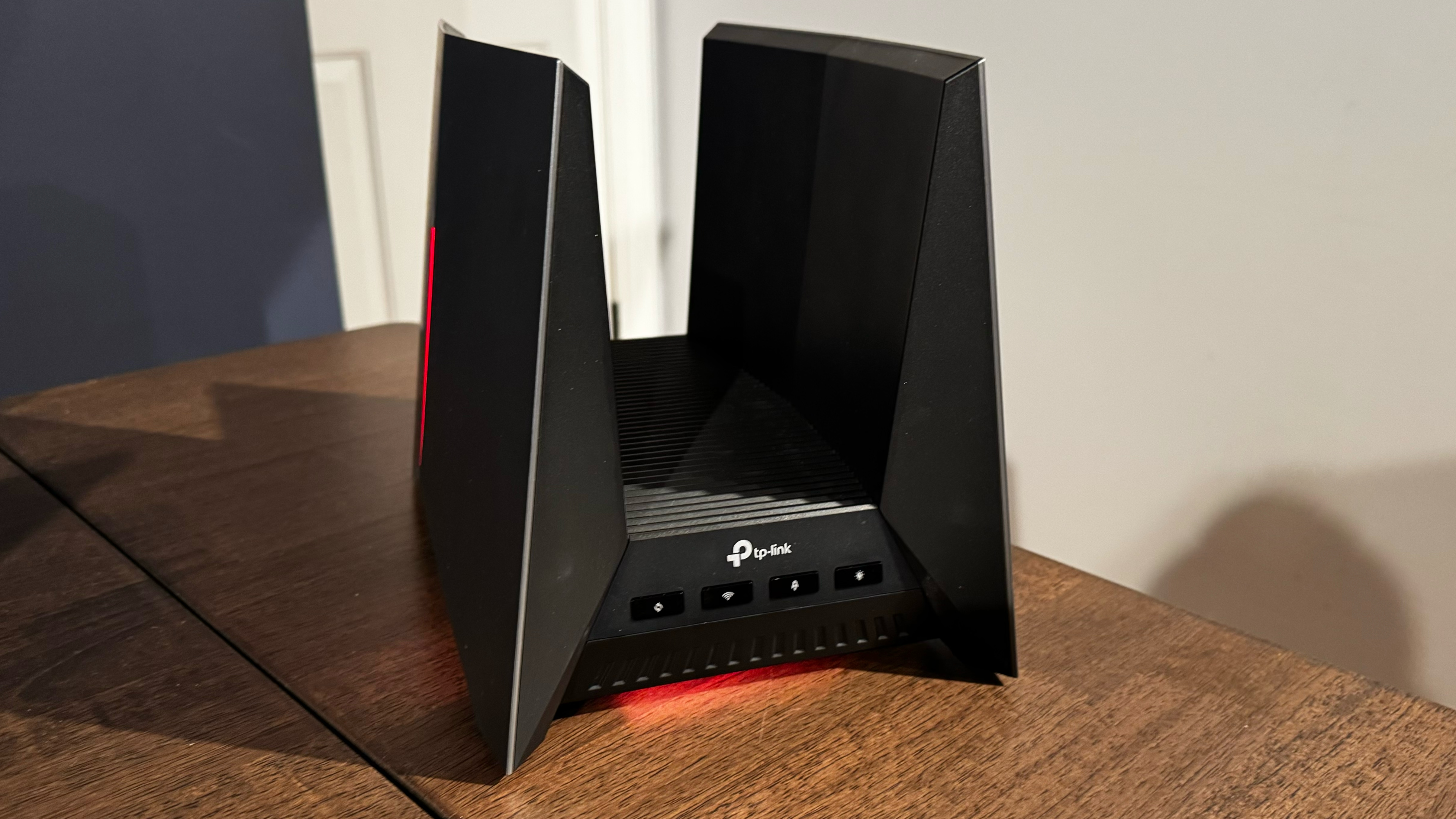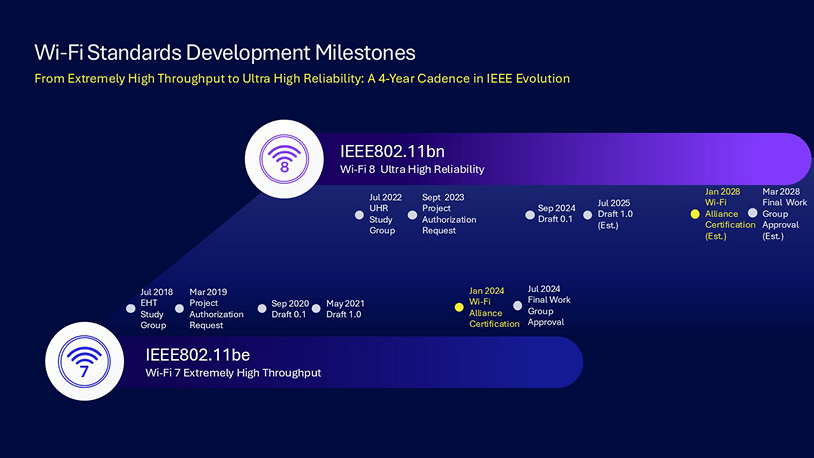TP-Link confirms successful Wi-Fi 8 trials — next-gen wireless standard to usher in advances in reliability and latency

Consumer Wi-Fi 7 devices have only been around for a couple of years at this point, but as we all know, technological progress doesn’t stand still. There’s always a push for making hardware faster, more secure, and more reliable. Wireless technologies are no exception, which means that the organizing bodies behind Wi-Fi are already looking forward to the next generation: Wi-Fi 8 (802.11bn).
Although details at this point are relatively light, TP-Link announced today that it has conducted its first successful trials of Wi-Fi 8 hardware using a prototype device. The company didn’t specify the hardware it used to achieve its Wi-Fi 8 milestone, referring only to a “joint industry partnership.” However, there are several big names in the Wi-Fi chip market, including Broadcom, Qualcomm, Intel, MediaTek, and Marvell. TP-Link has been known to work closely with Qualcomm to supply chipsets for its Wi-Fi 7 portfolio, so it’s plausible to assume that the partnership could extend to Wi-Fi 8 hardware.
According to the company, its testing has validated the Wi-Fi 8 beacon and data throughput, marking a “critical milestone in Wi-Fi 8 development.”
You can read more about TP-Link’s early development with Wi-Fi 8 on the information page that it created.
We learned last year that the overarching goal of Wi-Fi 8 is not to bring extraordinary theoretical speed improvements (although we’ll likely see some generational advances), but to improve overall reliability and real-world performance. Wi-Fi 8 will still utilize three bands (2.4 GHz, 5 GHz, and 6 GHz) and will retain the 4096 QAM and 320 MHz of maximum channel bandwidth introduced with Wi-Fi 7. While the maximum data rate remains at 46 Gbps, Wi-Fi 8’s Ultra High Reliability (UHR) goal is to improve real-world data rate by up to 25 percent for compliant devices.

In addition, four new technologies are aimed at improving various aspects of Wi-Fi life, as described in a MediaTek whitepaper: Coordinated Spatial Reuse (Co-SR), Coordinated Beamforming (Co-BF), Dynamic Sub-Channel Operation (DSO), and enhanced Modulation Coding Scheme (MCS). For example, Co-SR monitors power levels to deliver optimal signal strength between devices, while DSO can assign sub-channels to a device to boost throughput by up to 80 percent.
So, what does all of this mean for general consumers? If you reside in a dense urban environment, you can expect higher overall performance with reduced interference from competing wireless signals. In addition, you’ll notice fewer interruptions when roaming and better performance under low-signal situations.
Get Tom's Hardware's best news and in-depth reviews, straight to your inbox.
Wi-Fi 8 is preceded by Wi-Fi 7, and we first started seeing the first commercial-grade hardware in our lab in late 2023. Those initial Wi-Fi 7 products were costly, with the Amazon Eero 7 Max mesh router costing $599 for just a single node and $1,699 for a three-pack. Luckily, the prices for Wi-Fi 7 routers have come down dramatically since then. You can purchase a dual-band router for around $100, a tri-band router for under $200, and a tri-band mesh router for roughly $300 on sale.
However, with the new wireless standard on the horizon, we can expect those Wi-Fi 7 prices to drop further as we prepare for the inevitable price premium of Wi-Fi 8 hardware.

Brandon Hill is a senior editor at Tom's Hardware. He has written about PC and Mac tech since the late 1990s with bylines at AnandTech, DailyTech, and Hot Hardware. When he is not consuming copious amounts of tech news, he can be found enjoying the NC mountains or the beach with his wife and two sons.
-
Steve Nord_ Reply
Yes, hands-on getting that Syd Mead / Ashoka Artists Router Dress-Up Kit For WiFi 7E and 8 made in wherever most favored nation statuses will be when they decide to launch. Maybe just bounce the projector off a mirror on it or mount it over a 4' wide 'infinity' gap though, dunno.Amdlova said:With that picture of that tplink need comes with the force and light sabers -
voyteck Reply
It's not silly if there are people willing to pay it and existing production lines still provide substantial income so there is no reason to provide broad availability of the new standard right away. And if I could afford it, I wouldn't hesitate to pay the premium for better experience in my crowded environment (dozens of 2,4 GHz networks visible in Wi-Fi Analyzer, over a dozen 5 GHz ones, an Airport nearby and weather radars all over the country, which makes most of frequencies somewhat impractical to use).excalibur1814 said:...and the price will be absolutely silly. -
Konomi Reply
Perhaps. Is like spending $100,000 on a car compared to $30,000. Most people aren't going to need the higher priced one, as they'll be serviced just fine by the cheaper of the two, but if it makes them happy, fair enough. I know people that are perfectly fine with WiFi 5 gear - granted, they aren't bandwidth heavy users, with minimal devices to support and don't have a need for large coverage, but it isn't as though they wouldn't be happy with WiFi 8 either.excalibur1814 said:...and the price will be absolutely silly. -
heffeque Wifi 7 was supposed to be crazy expensive too and I got an RE655BE that's very powerful for not that much money.Reply
I disable the Wifi on my existing router (the ISP's doesn't allow you to change the router), I connect the RE655BE through ethernet to my router, and voilà, now I have great wifi, and I can easily place it somewhere that gives better coverage (also both wifi and ethernet backhaul EasyMesh are supported, in case you want more than one).
I'm sure something similar will come for Wifi 8 in 2028-2029. -
bill001g Wifi7 is a fraction of the cost it was when it came out. Asus is still very proud of their routers it seems and have not dropped the price though.Reply
We will see if this is more smoke and mirrors by the wifi industry. The seem to think they can reduce the latency and increase the stability. I really doubt that but we will see. I can't see how they can possibly solve the issue of random interfering signals on random radio frequencies. How can they possibly allow for some car with it wifi hotspot driving past a house interfering. I was surprised the number of modern cars that have this and how strong the signals are. This of course ignore all the non wifi uses on the same frequencies. Although less common there are still cordless phones and baby monitor systems that use the same radio bands but are not using wifi protocols so are undetectible unless the are measuring radio energy like a spectrum anylazer does. -
emike09 Been waiting for something like Wifi 8 to come out for many years. I could care less about 500 jigabits of throughput. Reliability and low latency matter most to me, both as a consumer, and sys admin.Reply -
Alvar "Miles" Udell Way overkill for home use, but for public areas like event halls, stadiums, and airports it's great. Still, one of the BEST things Wifi-8 could do is mandate 2.4, 5, and 6ghz tri-band, which it doesn't, to unify the standard so it doesn't become a garbled mess like USB. Either that or have a "Pro" standard which does mandate all three frequencies so people could tell at a glance which do and do not.Reply -
martinez91605 Too bad iphones are barely on wifi 6 and android wifi 6E so having those fancy wifi 8 routers won't do you much good unless they're triband routers in which case they'll help you when the network is loaded and everyone in your neighborhood is home. Other than that the wifi 8 part will just be future proofing. Like 10 years worth. LolReply